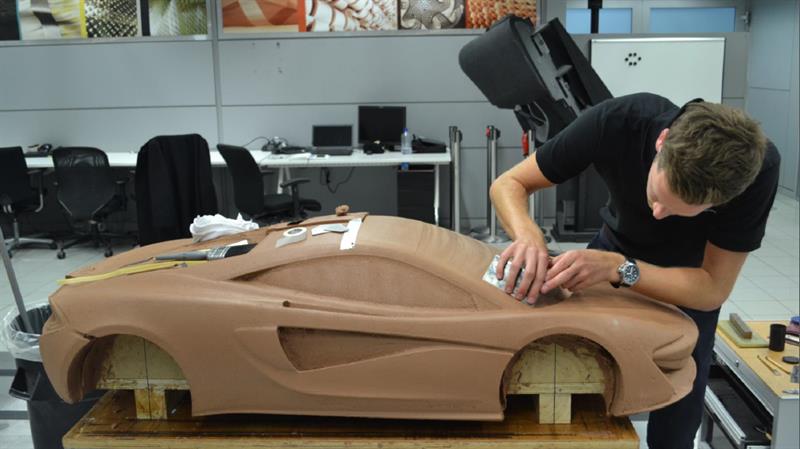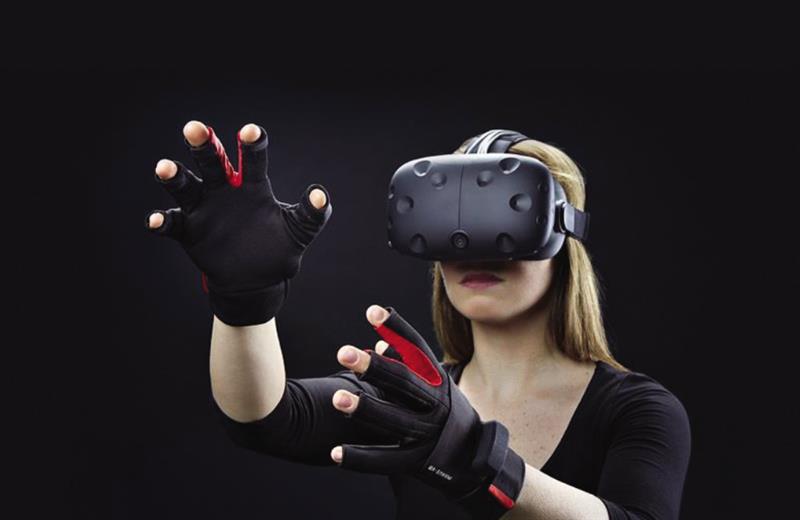The rise of electric and hybrid vehicles is changing the way vehicles are designed, made and sold. Instead of focussing on 0-60mph as a measure of performance, miles per gallon has become the standard to which vehicle performance is measured and, looking to the not too distant future, battery life and range will be the figures to compare.
To this end, demands on designers are continuing to increase. Chassis, human machine interface (HMI) and communications design will be growth areas with an increasing trend towards connected and autonomous vehicles, a market tipped to be worth £51billion by 2030. Newer, more efficient engines also need to be manufactured for lorries and other service vehicles as these are too heavy to run on electric motors alone.
Speaking at the launch of the Digital Engineering and Test Centre (DETC) at Loughborogh University’s London Campus, Jon Horsley, DETC programme director said: “We are anything but an industry of the past.”
Leaders from the automotive and gaming industries convened at the launch of this joint venture between industry and academia to give an overview of the project.
“The UK automotive industry employs 800,000 people making 1.7million vehicles, 2.4million engines, and 77% of all the cars made in the UK are exported abroad,” added Horsley. “It is a myth that the UK doesn’t make anything anymore. The modern industry is at the cutting-edge of digital technology.”
The idea behind the DETC is not just to design new products, but also new manufacturing processes, new ideas and technologies from outside of the automotive industry. As consumers demand a greater number of variants from manufacturers, the industry needs to respond by finding more efficient product design process and flexible manufacturing.

Solutions developed in the gaming industry are opening up a new world of opportunities for cross over with the automotive sector. Numerous breakthroughs are being made with collaborative projects between the two sectors. Technology advancements such as virtual reality will increasingly aid automotive companies design and manufacture vehicles.
Horsley added: “Systems are going to get more complicated, with testing and validation equally getting more complex. We need to look again at the way we test, verify and validate to see if there is a better way of doing things. The DETC is looking to bridge the gap between gaming technologies and digital engineering by utilising their software platforms and high power computing, and help them realise the business benefits of being engaged with the automotive industry.”
Gaming boost
Epic Games started out in Maryland in 1991 and by 1998 had developed the first Unreal Engine (UE) used to design and run ‘Unreal’, a 3D first-person-shooter for PC and Mac that went on to spawn a series of eight games. As well as Epic’s own games the subsequent four versions of UE have been used by many other companies to develop hundreds of titles over the last eight years.
As of March 2015, Unreal Engine 4 (UE4) – and all of its tools, features and complete C++ source code – is available for free with a royalty of 5% of gross revenue of any commercial product built using UE4 being paid to Epic rather than being leased out for millions per project. This has opened up opportunities for UE to be used in other markets.
Mark Rein, vice president and co-founder of Epic Games, said: “We wanted people to use the Unreal Engine for more than just game design. Companies like McLaren, BMW and Tesla came to us wanting to use Unreal to create a realistic car model.”
He explained that carbon fibre, for example, with its base layer of plastic or resin, carbon strands and clear top coating reflects light in different directions. This meant developing a way to recreate sub-surface scattering to make it look realistic.
“Cars are something we interact with all the time, you know when it looks right and when it looks wrong,” he added. “In order for our engine to reproduce the most lifelike materials that go into cars we had to create a whole materials library.”
McLaren is one UK vehicle manufacturer that used UE4 to design its latest sports car, the 570S. The initial designs for its cars started off very traditionally, with designers making pencil sketches of the exterior and interior. These are then refined through computer aided surfacing (CAS) to see what works and where the designers will have to compromise to bring the car to completion.
“McLaren’s design studio is very small and thus has to be flexible, aiming to hit the fastest, tightest timescales,” said Mark Roberts, McLaren’s design operations manager. “Designs are displayed on a full-size power wall to give designers and engineers a feel for the ride height and exactly where the interior details will be located by being able to walk up to it.”
 The next stage in McLaren’s design process is making clay models; a full-size interior and a 40% scale model of the exterior where the designs will be refined until a full-sized model can be made from two and a half tonnes of clay. This whole process takes about a year.
The next stage in McLaren’s design process is making clay models; a full-size interior and a 40% scale model of the exterior where the designs will be refined until a full-sized model can be made from two and a half tonnes of clay. This whole process takes about a year.
“Working closely with Epic, using the Unreal Engine and the HTC Vive virtual reality (VR) headset and tactile gloves, this has all changed for us in the last few months,” explained Roberts. “Believability is key, if the designers believe what they see when they’re sat in or walking around the virtual car, they can make confident design decisions. That comes down to the quality of the rendered image that they’re seeing. The high-fidelity real-time rendering of the Unreal Engine is helping us do that.”

McLaren and Epic are building powerful visualisation tools not just for the marketing of the car to customers, who are able to view the car on a device and change everything about the car: the colour and finish of the interior and exterior; the materials the body or furnishings are made from; and to visualise how the paint and carbon fibre interacts with light. But also for the very beginning of the design process; so as soon as the sketches go from 2D to 3D the tools will help the designers to start creating in the virtual world.
“It’s going to complement the process we have at the moment, it won’t replace it for a long while, we still need the physical models,” continued Roberts. “But it’s really going to help us speed the process and it gives the designers such confidence in what they do. They can take a cast model and view it in the nearest thing as possible to the real world.”
Although gaming seems a million miles away from automotive design, it is leading the way in terms of capability in design software. There are huge opportunities for collaboration between the two industries to save time and money in the design stages as well as speed product time to market, and the collaboration between two seemingly different technology sectors is likely only to increase in coming years.











